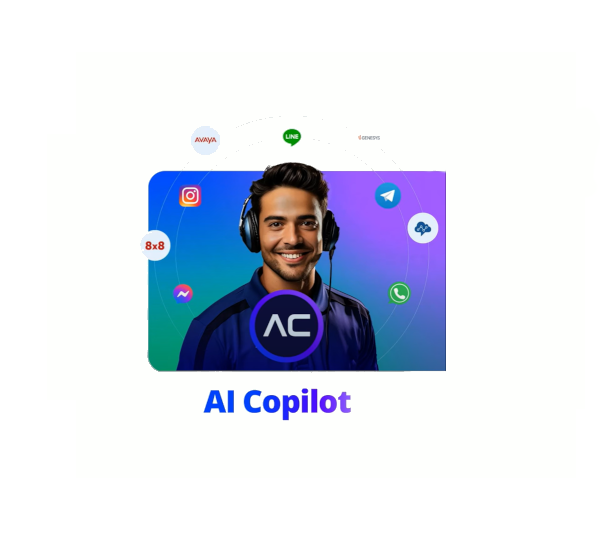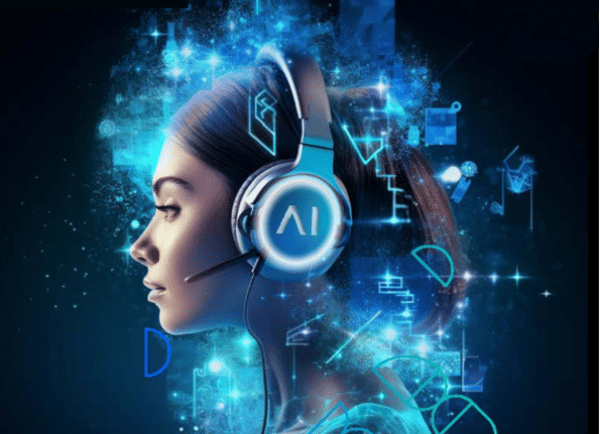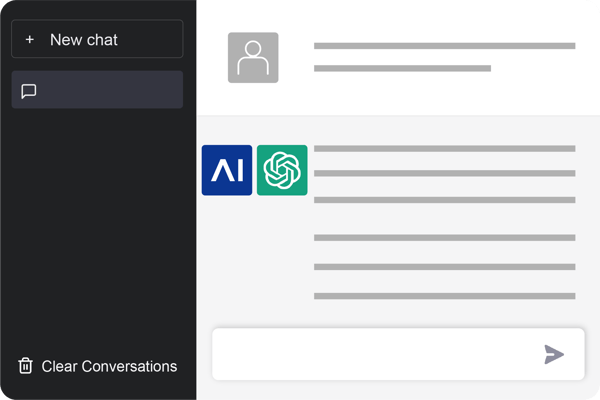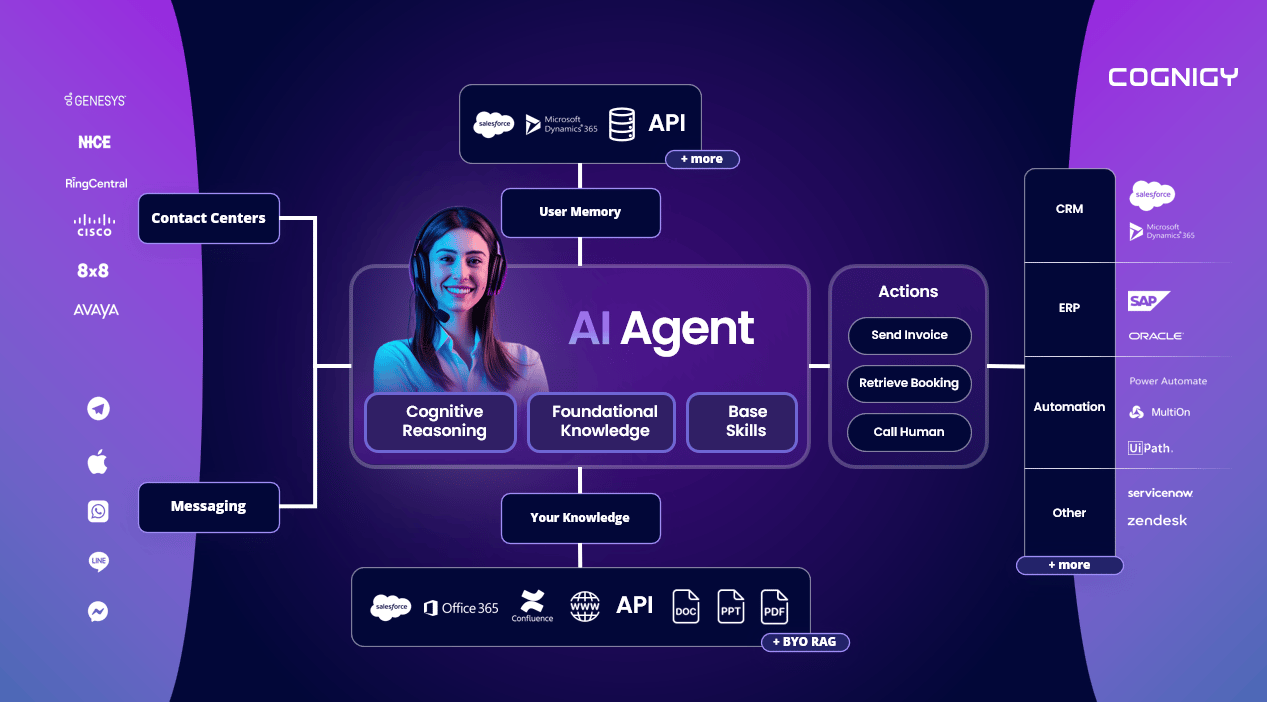Use Cases of AI Agents
AI Agents can be deployed in many different ways to address customer service issues, improve business productivity, and automate mundane processes to free up internal resources.
Here are some everyday use cases in enterprise organizations…
Identification & Verification
One of the most time-consuming elements of any customer call happens at the start when they need to provide details to identify/verify them. AI Agents can fully automate this process, answering the call immediately and then talking customers through the ID&V stages. In doing so, they slash waiting times and remove the manual burden of this essential yet highly repeatable process from your human team – leaving them free to focus on more complex cases.
Customer Support Agents
Thanks to the complex, dynamic reasoning of Agentic AI, AI Agents can be effective customer service agents who engage directly with customers. Using a combination of LLMs and NLU, they can understand voice or text input and communicate in a human-like manner with customers, taking their needs into account and then acting in a goal-oriented way to resolve them.
Due to integrations with your backend systems, the AI Agent can often complete the task on its own, but if it can’t, it can also create a contextual handover and pass it on to a human agent who will be better equipped to solve the issue.
Customer service AI Agents are a revolutionary step in your automation journey. Unlike previous tools and technology, an AI Agent is capable of the flexibility, fluidity, and natural-sounding conversations customers expect when engaging with your team.
Agent Copilot
AI Agents are not here to replace existing human resources. Instead, they have the capability to augment them and make your current teams more efficient than ever before. AI Agents can bring powerful Agent Copilot features to your customer service teams, bringing the power and efficiency of augmentation to your workforce’s most resource-draining tasks.
Before calls, AI Agents can perform large-scale analysis across all of your logs and spot trends or patterns to better inform human employees on common issues. They can then take care of the initial ID&V stages before passing a contextual handover to the human agent – which means they’ll never answer a call and ask a customer to repeat themselves or have to explain the problem again.
During the call, the AI Agent can transcribe and even translate the conversation for the customer service professional in real-time. It can recognize questions and present answers on your agent’s screens, saving them time and improving the chance of a positive outcome.
After the call, the AI Agent continues to assist by automating the wrap-up process and creating a call log that the human agent can quickly review and make minor changes to. This saves valuable time at the end of every call, giving agents more time to tackle higher volumes each day.
Outbound Support
In the past, automation focused solely on inbound support due to the more controllable nature of incoming service requests. With outbound calling, predicting what a customer may say or do becomes far harder, limiting the utility of an AI Agent.
Now, however, Agentic AI gives AI Agents the ability to dynamically reason through conversations while creating and pursuing bespoke goal-oriented workflows. This makes them fully capable of pursuing outbound calls for various purposes, such as an insurer contacting a customer proactively ahead of a renewal date to re-arrange their cover.
Explore more AI Agent use cases and see real-world examples here.

.png?width=60&height=60&name=AI%20Copilot%20logo%20(mega%20menu).png)




.png?width=600&height=600&name=Knowledge%20AI%20Feature%20image%20(2).png)












